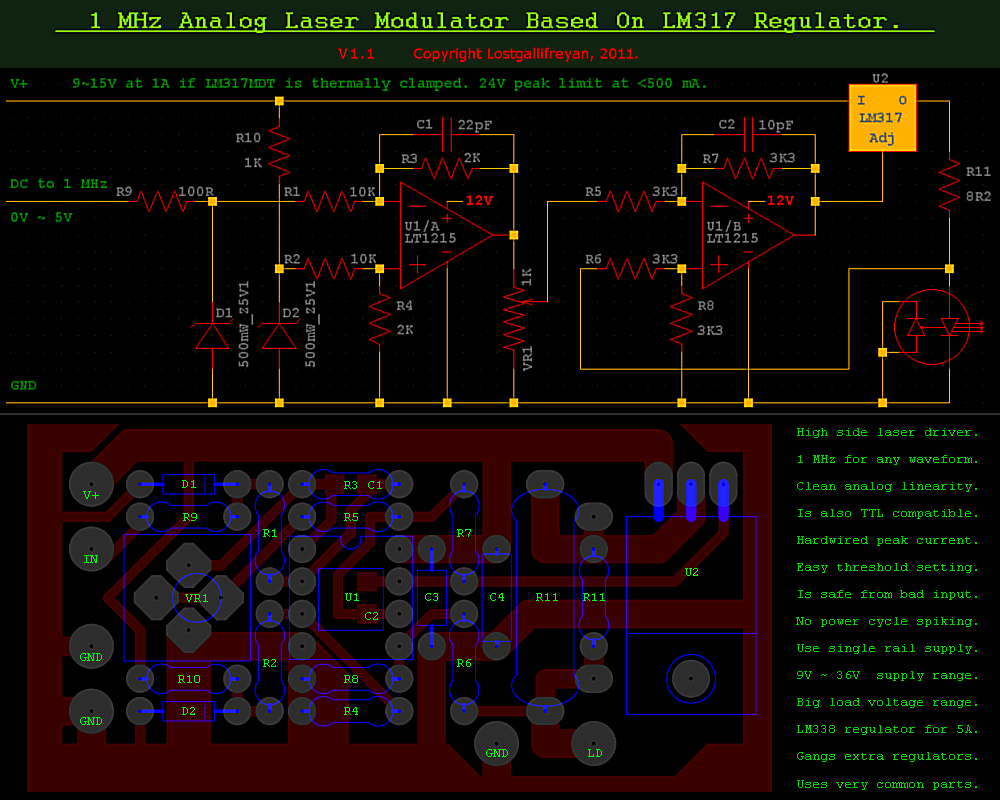- Joined
- Feb 6, 2016
- Messages
- 4
- Points
- 0
Hello everybody,
I've read a ton of threads on this forum while designing the laser engraver that I'm currently building. I decided to ask all your guys expertise on my 2W 445nm laser. I've made the typical laser driver with an LM317 and a 22uf capacitor. I have a raspberry pi 2 to use to switch the laser on and off. For some reason it finally clicked in my head that I wouldn't be able to switch the laser on and off fast like a laser engraver requires, due to a capacitor being in parallel with the laser. I always thought that the capacitor acted as a filter and more importantly made sure the power didn't look like a square wave, which I heard was way easier on the diode. I'm confused on how engravers are able to turn the diode on and off so fast to engrave pictures, and still maintain diode life.
Any help is greatly appreciated.
Thanks,
Riot
I've read a ton of threads on this forum while designing the laser engraver that I'm currently building. I decided to ask all your guys expertise on my 2W 445nm laser. I've made the typical laser driver with an LM317 and a 22uf capacitor. I have a raspberry pi 2 to use to switch the laser on and off. For some reason it finally clicked in my head that I wouldn't be able to switch the laser on and off fast like a laser engraver requires, due to a capacitor being in parallel with the laser. I always thought that the capacitor acted as a filter and more importantly made sure the power didn't look like a square wave, which I heard was way easier on the diode. I'm confused on how engravers are able to turn the diode on and off so fast to engrave pictures, and still maintain diode life.
Any help is greatly appreciated.
Thanks,
Riot





